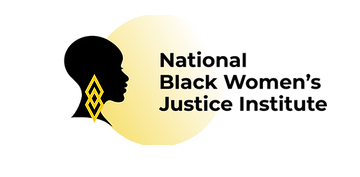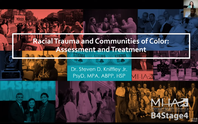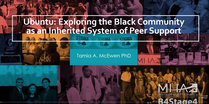Mental Health Resources
Eric Kyere, Stephanie Rudd and Sadaaki Fukui titled, The Role of Racial–Ethnic Identity in Understanding Depressive Symptoms in the Context of Racial Discrimination Among African American Youth.
ABSTRACT Objective: The current study tested the individual associations of three dimensions of racial–ethnic identity (i.e., private regard, public regard, and racial centrality) on depression and their moderation effects on the relationship between racial discrimination and depression. Method: We conducted secondary data analysis using a large, nationally representative cross-sectional sample of African American youth in the United States (N 5 810; mean age 515, SD 5 1:44; 52% female). We used hierarchical multiple regression modeling to test the moderation effects of racial–ethnic identity dimensions on the relationship between racial discrimination and depression, controlling for demographics and parental support. Results: Of participants, 86% reported experiencing at least one of the racial discrimination experiences on the Everyday Discrimination Scale. Consistent with prior research, racial discrimination was associated with depressive symptoms; higher levels of emotional support from parents were significantly and negatively associated with depression. Most importantly, whereas the racial–ethnic identity dimensions were positively correlated to one another, we found they have unique associations with depression. In particular, public regard (i.e., participants’ evaluation of how society views the Black racial group) moderated the association between racial discrimination
and depression. Conclusions: Although it is important to understand the independent effects of the racial–ethnic identity dimensions, the current study also suggests the need to understand their interactive effects on depression in the context of racial discrimination among African American youth.
ABSTRACT Objective: The current study tested the individual associations of three dimensions of racial–ethnic identity (i.e., private regard, public regard, and racial centrality) on depression and their moderation effects on the relationship between racial discrimination and depression. Method: We conducted secondary data analysis using a large, nationally representative cross-sectional sample of African American youth in the United States (N 5 810; mean age 515, SD 5 1:44; 52% female). We used hierarchical multiple regression modeling to test the moderation effects of racial–ethnic identity dimensions on the relationship between racial discrimination and depression, controlling for demographics and parental support. Results: Of participants, 86% reported experiencing at least one of the racial discrimination experiences on the Everyday Discrimination Scale. Consistent with prior research, racial discrimination was associated with depressive symptoms; higher levels of emotional support from parents were significantly and negatively associated with depression. Most importantly, whereas the racial–ethnic identity dimensions were positively correlated to one another, we found they have unique associations with depression. In particular, public regard (i.e., participants’ evaluation of how society views the Black racial group) moderated the association between racial discrimination
and depression. Conclusions: Although it is important to understand the independent effects of the racial–ethnic identity dimensions, the current study also suggests the need to understand their interactive effects on depression in the context of racial discrimination among African American youth.
| kyere.rudd.fukui.racial-ethnic_identity_racial_discrimination_and_black_youth_depression.pdf | |
| File Size: | 394 kb |
| File Type: | |

The Hope, Healing and Health Collective (H3 Collective) worked to elevate the voices of Black, Indigenous and People of Color (BIPOC) and other marginalized youth in developing policy solutions to address their own mental health needs, as well as the mental health of all youth of color in this country. Fifteen youth leaders from across the nation worked together to identify strategies to improve the mental health of marginalized youth of color and their communities. This report outlines the H3 Collective’s public policy recommendations for improving the mental health and wellness of BIPOC youth. Specifically, it sets forth actionable solutions policymakers at the federal, state and local levels can implement to build a culturally-responsive and gender affirming mental health care system for all youth, especially marginalized youth of color.
| youth_centered_strategies_for_hope_healing_and_health_may_2022.pdf | |
| File Size: | 2819 kb |
| File Type: | |

THE HOPE, HEALING AND HEALTH COLLECTIVE
Recognizing BIPOC Mental Health Awareness Month
The Children's Partnership aim to expand the availability and accessibility of culturally-competent and gender-responsive mental health services and supports to youth of color, particularly Black girls, Indigenous youth, and Latina girls who are experiencing historic, crisis-level rates of mental health needs and suicide risk. Despite evidence of a demonstrated need, behavioral health services are underutilized among communities of color. The reasons why youth of color do not engage in traditional mental health services at rates that are proportionate to the need within those communities are complex — including limited access, social stigma, misgivings about the efficacy of treatment, and distrust of providers. Additionally, a lack of mental health care coordination with the broader health care system and other service providers fails to effectively engage the youth being served.
Recognizing BIPOC Mental Health Awareness Month
The Children's Partnership aim to expand the availability and accessibility of culturally-competent and gender-responsive mental health services and supports to youth of color, particularly Black girls, Indigenous youth, and Latina girls who are experiencing historic, crisis-level rates of mental health needs and suicide risk. Despite evidence of a demonstrated need, behavioral health services are underutilized among communities of color. The reasons why youth of color do not engage in traditional mental health services at rates that are proportionate to the need within those communities are complex — including limited access, social stigma, misgivings about the efficacy of treatment, and distrust of providers. Additionally, a lack of mental health care coordination with the broader health care system and other service providers fails to effectively engage the youth being served.

Mental Health Services for Black Girls
Expanding culturally-competent and gender-responsive mental health services for Black girls and other youth of color. The National Black Women’s Justice Institute has partnered with The Children’s Partnership to create The Hope, Healing and Health Collective (H3 Collective). H3 is a youth-led collaborative (with support and thought partnership from adult allies within policy, research, direct service and government) of 15 youth leaders and organizations from across the country that will develop a policy agenda to expand the availability and accessibility of culturally-competent and gender-responsive mental health and well-being services to Black girls and other youth of color who are experiencing historic, crisis-level rates of mental health needs and suicide risk. We need mental health services that recognize the specific experiences of Black girls and provide approaches that are both culturally specific and gender affirming. The H3 Collective will serve as a driving force for change and as a model to demonstrate what meaningful mental health services for Black girls and other girls of color could look like.
Expanding culturally-competent and gender-responsive mental health services for Black girls and other youth of color. The National Black Women’s Justice Institute has partnered with The Children’s Partnership to create The Hope, Healing and Health Collective (H3 Collective). H3 is a youth-led collaborative (with support and thought partnership from adult allies within policy, research, direct service and government) of 15 youth leaders and organizations from across the country that will develop a policy agenda to expand the availability and accessibility of culturally-competent and gender-responsive mental health and well-being services to Black girls and other youth of color who are experiencing historic, crisis-level rates of mental health needs and suicide risk. We need mental health services that recognize the specific experiences of Black girls and provide approaches that are both culturally specific and gender affirming. The H3 Collective will serve as a driving force for change and as a model to demonstrate what meaningful mental health services for Black girls and other girls of color could look like.
|
Racial/Ethnic Socialization and Faith: Essential Ingredients for Achieving Liberation and Empowerment Among African American Youth, in the Social Work & Christianity
ABSTRACT:Although racial-ethnic socialization (RES) within the African American communities includes faith/spirituality, Christian social workers have not explored this relationship in ways that explicitly integrate the two. As a result, we have limited understanding of how Christian social workers can foster a holistic sense of self that integrates Christian and racial/ethnic identities to foster empowerment and liberation possibilities among black/African American youth. Drawing on literature related to RES and faith/spirituality, we argue that Christians social workers can integrate the process of faith development, with an explicit focus on Black liberation theology, with RES to promote psychological and spiritual liberation to foster self-worth and dignity of black youth to promote their positive development. This paper provides a review of the literature on racial/ethnic socialization. A discussion of how the Black church and liberation theology along with black history positively shapes racial identity and preparation to resist racism. We conclude with some practice and research recommendations. |
| ||||||
|
Mixed Methods Evaluation of a Movement and Mindfulness Empowerment Workshop for Adults with Serious Mental Illness
Michael L. Clarkson-Hendrix & Paula J. Peters Abstract: For seriously mentally ill adults, empowerment is critical to maximizing participation in major life activities. Although studies have identified interventions that have positively impacted empowerment, these interventions may not be applicable or amenable to all adults with serious mental illness. More interventions with other approaches are needed. Therefore, this study evaluated the initial implementation of a movement- and mindfulness-based workshop intervention. Quantitative data were used to examine differences in empowerment before and after the workshop, and qualitative data were used to explore participants’ perceptions of the reasons for empowerment differences. Ten participants completed the intervention, and nine of the ten participants also completed follow-up interviews. Quantitative data were collected via pre- and post intervention surveys. Qualitative data were collected through follow-up interviews with the participants. Surveys revealed perceptions of optimism and control over the future increased between pre- and post-intervention. Interviews uncovered that increases in optimism and control over the future may have been related to workshop accomplishments and reduced helplessness outside of workshop sessions. Future research would benefit from the creation of a training manual along with a validated system to monitor intervention fidelity. |
| ||||||
|
Temporal Trends in Suicidal Ideation and Attempts Among US Adolescents by Sex and Race/Ethnicity, 1991-2019
Yunyu Xiao, PhD; Julie Cerel, PhD; J. John Mann, MD In this cross-sectional study of 183 563 adolescents in the US, a decreasing temporal trend in suicidal ideation changed to an increase, with different turning points for females (2009), White (2009), Hispanic (2007), and Black (2005) adolescents. Male and Black youths had nonsignificant changes in suicidal ideation, but the greatest increase in the prevalence of nonfatal suicide attempts. |
| ||||||
|
Temporal Trends and Disparities in Suicidal Behaviors by Sex and Sexual Identity Among Asian American Adolescents
Yunyu Xiao, PhD, Wenhua Lu, PhD The article examines the trends and within-group disparities in self-reported suicidal behaviors among Asian American adolescents from 1991 through 2019. This study found significant increases in rates of suicide plan among Asian American adolescents who were sexual minorities identified by sexual identity and sexual contact together. These findings suggest that suicide screening needs to inquire about sexual minority status in terms of sexual identity and sex of sexual contact when identifying Asian American adolescents who are at risk for suicidal behaviors. Culturally relevant suicide-prevention programs addressing unique risk and protective factors, racial discrimination, and sexual orientation–related stigma may be needed for Asian American adolescents. |
| ||||||

Racial Trauma And Communities Of Color: Assessment And Treatment
Mental Health America
Steven D. Kniffley Jr., PsyD, MPA, ABPP
The experience of White supremacy and systemic racism contributes to a unique form of trauma for Black and Brown individuals called racial trauma. This form of trauma can lead to difficulties in racial identity development as well as challenges in regard to meaning making and self-advocacy when experiencing racism and discrimination. This presentation will engage participants in a discussion concerning defining racial trauma and race-related stress, exploring the psychological and physical impact of racial trauma, and highlighting the components of racial trauma therapy.
Mental Health America
Steven D. Kniffley Jr., PsyD, MPA, ABPP
The experience of White supremacy and systemic racism contributes to a unique form of trauma for Black and Brown individuals called racial trauma. This form of trauma can lead to difficulties in racial identity development as well as challenges in regard to meaning making and self-advocacy when experiencing racism and discrimination. This presentation will engage participants in a discussion concerning defining racial trauma and race-related stress, exploring the psychological and physical impact of racial trauma, and highlighting the components of racial trauma therapy.
Adolescent Social Networks Matter for Suicidal Trajectories: Disparities Across Race/Ethnicity, Sex, Sexual Identity, and Socioeconomic Status
Yunyu Xiao & Michael A. Lindsey
This study examines adolescent social networks predicting suicide ideation and attempt trajectories transitioning to adulthood, while revealing differences across racial/ethnic, sex, sexual identity, and socioeconomic status. Greater family cohesion significantly reduced the probability of belonging to high-decreasing (Trajectory 2) and moderate-decreasing-increasing (Trajectory 3) suicidal ideation trajectories, and moderate-decreasing (Trajectory 2) suicide attempt trajectory. Race/ethnicity, sex, and sexual identity significantly moderated the associations between social networks (household size, peer network density, family cohesion, peer support, neighborhood support) and suicidal trajectories. Social networks during adolescence influenced the odds of belonging to distinct suicidal trajectories. Family cohesion protected youth from being in high-risk developmental courses of suicidal behaviors. Social networks, especially quality of interactions, may improve detecting adolescents and young adults at-risk for suicide behaviors. Network-based interventions are key to prevent suicidal behaviors over time and suicide intervention programming.
Yunyu Xiao & Michael A. Lindsey
This study examines adolescent social networks predicting suicide ideation and attempt trajectories transitioning to adulthood, while revealing differences across racial/ethnic, sex, sexual identity, and socioeconomic status. Greater family cohesion significantly reduced the probability of belonging to high-decreasing (Trajectory 2) and moderate-decreasing-increasing (Trajectory 3) suicidal ideation trajectories, and moderate-decreasing (Trajectory 2) suicide attempt trajectory. Race/ethnicity, sex, and sexual identity significantly moderated the associations between social networks (household size, peer network density, family cohesion, peer support, neighborhood support) and suicidal trajectories. Social networks during adolescence influenced the odds of belonging to distinct suicidal trajectories. Family cohesion protected youth from being in high-risk developmental courses of suicidal behaviors. Social networks, especially quality of interactions, may improve detecting adolescents and young adults at-risk for suicide behaviors. Network-based interventions are key to prevent suicidal behaviors over time and suicide intervention programming.

Mental Health of America Webinar-Ubuntu: Exploring The Black Community As An Inherited System Of Peer Support
Mental Health of America
Tamia A. McEwen, PhD
The South African concept Ubuntu means “I am because We are.” This concept speaks about the inherited interconnected thread that binds the Black community together. It is the often-unrecognized natural Peer Support that goes unnoticed and uncompensated. Join Mental Health America (MHA) as we discuss peer support from a critical lens that centers the agency and inherited value of the Black community.
You can view a full recording of the webinar here.
Mental Health of America
Tamia A. McEwen, PhD
The South African concept Ubuntu means “I am because We are.” This concept speaks about the inherited interconnected thread that binds the Black community together. It is the often-unrecognized natural Peer Support that goes unnoticed and uncompensated. Join Mental Health America (MHA) as we discuss peer support from a critical lens that centers the agency and inherited value of the Black community.
You can view a full recording of the webinar here.
|
Racial/Ethnic, Sex, Sexual Orientation, and Socioeconomic Disparities in Suicidal Trajectories and Mental Health Treatment Among Adolescents Transitioning to Young Adulthood in the USA: A Population-Based Cohort Study
Xiao, Y., Lindsey, M.A. Summary: Suicide is the second leading cause of death for people aged 10–34 years old. Limited research has documented extant heterogeneities in suicide across the life course and among diverse sociodemographic groups. There is also limited research on the influences of mental health utilization on suicidal trajectories across the life course. This study used latent class growth analyses and identified 3 suicidal ideation trajectories, and 2 suicide attempt trajectories among a nationally representative sample of adolescents transitioning to adulthood. The study further identified that compared with the low-stable trajectories, the risks of being in high-decreasing suicidal ideation trajectories were higher among females and sexual minorities. Sexual and low-SES adolescents were more likely to be in the moderate-decreasing suicide attempt group. Mental health service utilization predicted engagement in high-risk suicidal trajectories. Sociodemographic disparities in suicidal trajectories initiate early and persist over time. Individuals in high-risk trajectories received mental health treatment during adolescence. Suicide prevention should target vulnerable subpopulations and mental health service utilization in the early stage. |
| ||||||
|
The Role of Mental Health Courts in Mitigating Family Violence
Donald M. Linhorst, PhD, MSW, David Kondrat, PhD, MSW, Jacob Eikenberry, MSW, and P. Ann Dirks-Linhorst, JD, PhD Abstract: Mental health courts are one potential means to mitigate violence against family members by people with mental illness. This study identified the rate at which cases of family violence come before a mental health court and the success of defendants charged with assaulting family members. In a sample of 1,456 defendants eligible to participate in a mental health court, descriptive statistics were used to report rates of admission of defendants charged with assaulting family members and their characteristics; a static group design was used to compare post-program rearrests among defendants who assaulted family members who successfully completed the program, who did not complete the program, and who did not participate despite being eligible; and logistic regression was used to determine the effect of participation on rearrest when controlling for demographic and clinical factors. The study found that family violence occurred in 24.7% of admitted cases. Most eligible defendants who assaulted family members (75.8%) participated in the court program, and among those who did, 72.2% successfully completed the program. Defendants who assaulted family members and had a positive program termination had a much lower rate of rearrest post-program completion compared with those who did not complete the program or did not participate despite being eligible, a finding that held when controlling for other factors. This study suggests that mental health courts can be an effective option for mitigating family violence committed by people with mental illness. |
| ||||||

